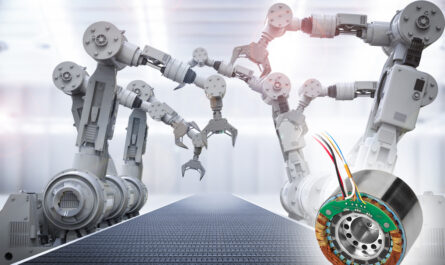
Introduction to UGVs
Unmanned ground vehicles, also known as UGVs, are self-powered machines that operate on the ground without an onboard human presence. UGVs are generally remotely controlled or operated semi-autonomously using sensors and onboard computers for navigation. With the advancements in robotics, artificial intelligence, and autonomous technologies, the applications and uses of UGVs are rapidly expanding beyond traditional military operations into new civilian and commercial domains.
Military Applications of UGVs
Unmanned ground vehicles have become an important part of modern military operations due to their ability to perform dangerous missions while minimizing risk to human soldiers. For decades, UGVs have been used for land mine detection and disposal, reconnaissance operations in hostile areas, and transportation of supplies over long distances. More recently, UGVs equipped with surveillance cameras, weapons, and interactive communication systems are being deployed for combat missions.
Several countries including the United States, Israel, UK, and South Korea have been developing advanced combat UGVs that can select and fire weapons autonomously at enemy targets. While increased autonomy raises ethical concerns, militaries argue that armed UGVs are needed to counter new threats and protect soldiers’ lives. A few defense companies have also begun marketing UGVs for border patrol and policing dangerous situations that require an armed remote presence. Overall, the military robotic vehicle market is expected to grow substantially over the next decade due to new technological capabilities and operational demands.
Civilian and Commercial Uses of Unmanned Ground Vehicles
Beyond defense, UGVs have found applications in sectors such as transportation and logistics, agriculture, construction, and emergency response. For example, self-driving trucks and delivery vehicles that transport cargo over long distances without human intervention are being tested and adopted by logistics giants. In agriculture, UGVs equipped with sensors and robotic arms are used for weed removal, crop monitoring, soil analysis, and selective spraying – helping increase yields while reducing workload and farmer exposure to chemicals.
In construction, UGVs perform a variety of tasks such as material handling, autonomous bulldozing, terrain mapping, infrastructure inspection, and hazardous waste clean up. Their low cost and ability to work in hazardous conditions makes UGVs invaluable for emergency response operations during natural disasters, fires, chemical/nuclear leaks, and bomb disposals. Going forward, UGVs show promise to assist elderly and disabled populations by serving as mobile couriers and transportation aids. Overall, civilian Unmanned Ground Vehicle Market are nascent but expected to grow exponentially in size and scope this decade.
Technical Challenges and Safety Considerations
While the capabilities of UGVs continue to rapidly progress, a number of technical challenges must still be overcome for their safer civil integration and adoption at scale. Navigation and object detection remain difficult in unstructured outdoor environments unlike controlled indoor settings. UGVs also struggle with perception, decision making, and interactions involving humans, animals, and unexpected scenarios. Reliable localization, communication latency, and energy autonomy over long mission durations present additional engineering barriers.
From a safety perspective, UGVs must possess redundant control and communications systems to avoid potential harms from failures, hacking or loss of control. Collision avoidance, unexpected emergency stops, and human interaction safety remain active research areas. Regulatory frameworks need to ensure UGVs can identify authorized operators, adhere to traffic rules, and do not become unwanted platforms for criminal misuse. Overall, addressing technical roadblocks and assuring public safety will determine the pace of Unmanned Ground Vehicle Market commercialization and societal acceptance moving forward.
Innovation and Research Directions
Leading universities and private companies are partnering to pool multidisciplinary research for enabling transformative UGVs capabilities. While navigation and perception techniques are maturing rapidly using computer vision, LiDAR and AI, research now focuses on tactile interactions, manipulation abilities, teaming with human counterparts, and achieving general autonomy comparable to insect levels. Long term goals involve UGVs with distributed modular intelligence, self-healing mechanisms, lifelike mobility, and forms resembling animals for diverse applications.
Some key innovation directions include developing UGVs capable of following natural language commands, seamlessly integrating with smart infrastructure systems using 5G, and functioning for months at a time without maintenance or charging. Research is also exploring more sustainable power sources beyond batteries through fuel cells, flywheels or even artificial ‘biology’. Overall, sustained progress in UGV autonomy, manipulation and energy storage promise to revolutionize many industries and dramatically improve our lives in the coming decades.
In summary, Unmanned Ground Vehicles have come a long way from their origins in military applications and are poised to transform both commercial and civilian sectors in the years ahead. While technical and adoption challenges remain, focused innovation efforts are helping UGVs gain capabilities at an unprecedented pace. As the roles of UGVs continue to grow and change, safety regulations and societal considerations will also need to keep up with their emerging applications. Overall, the future appears bright for UGVs Market to revolutionize work and assist humans in innovative new ways.
*Note:
- Source: Coherent Market Insights, Public sources, Desk research
- We have leveraged AI tools to mine information and compile it



